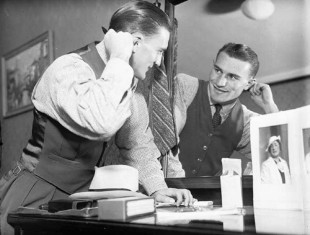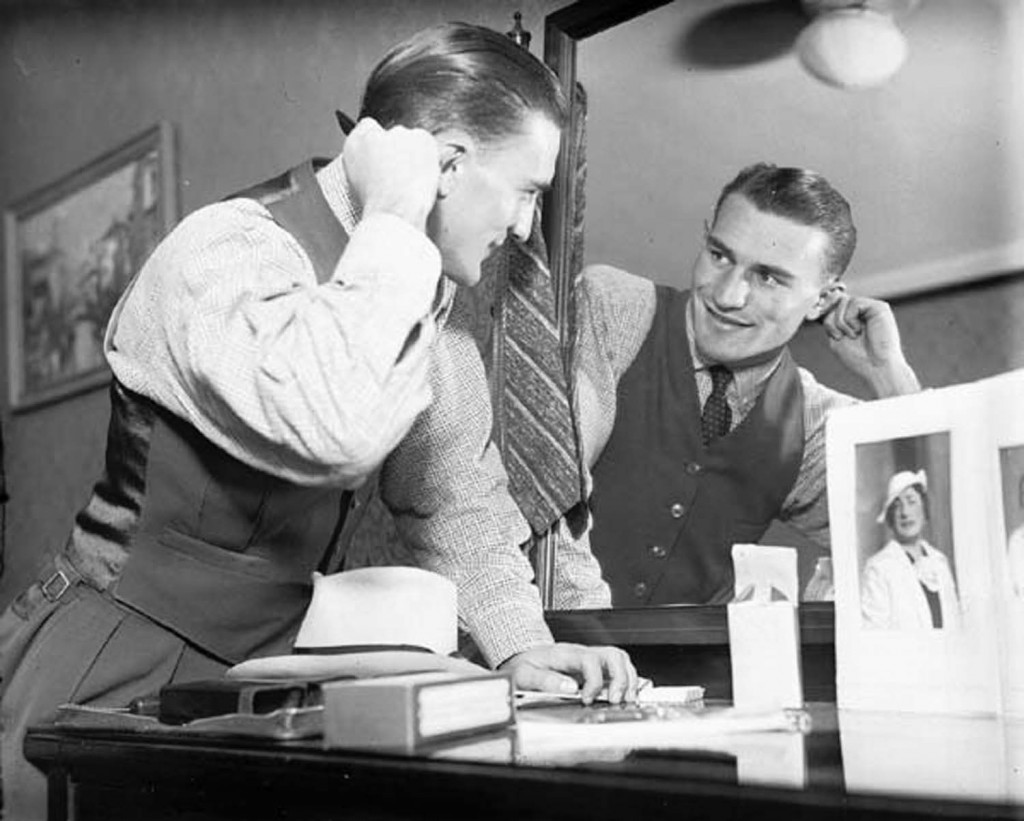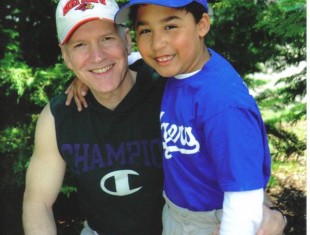Clay Moyle
I’ve been thinking a lot about Freddie Steele lately. Have you ever heard of him? He was also known as the “Tacoma Assassin” and he wore the mantle of The Middleweight Champion of The World in 1936 – 1938.
A short time ago, I learned a lake not far from my home once served as a training camp for a number of boxers, including the champion in that period of time. Now, every time I drive to work and pass Five Mile Lake on Military Road in Federal Way, I find myself thinking about Freddie Steele and wondering what the site looked like in those days when it was the home to a resort and a number of summer rental cabins.
One of these days I may have to go down to the Tacoma Library and see if I can find any photographs of the lake around that period of time to satisfy my curiosity. In the meantime, for those of you who haven’t heard of Steele or don’t know much about him or his career, maybe you’ll find the following of interest.
He was born in Seattle on December 18, 1912 as Frederick Burgett. I don’t know the story behind the decision to box under the last name of Steele, but like many actors who adopted another last name it wasn’t uncommon for a lot of boxers to fight under a different name in the early twentieth century. For example, the birth name of the great heavyweight champion Jack Dempsey was really William Harrison. Another great champion known as Rocky Marciano was named Rocco Marchegiano upon birth.
There were a number of boxers who fought under different names back then because their parents forbid them from fighting initially, and it was illegal in many parts of the country at different points in time, or maybe it was just because their real name just didn’t seem marketable enough.
In any case, about the time that Freddie was eight-years-old there was another fighter from the Pacific Northwest, a featherweight by the name of Tod Morgan most folks today probably haven’t heard of either.
Morgan was beginning to make quite a name for himself in 1920 and would ultimately go on to win the world featherweight and junior lightweight titles. Freddie became enamored with the fighter while he was training in Concrete, Washington and tried to join him on his roadwork. That experience generated an interest in the sport.
So, a few years later the little 12-year-old boy entered a boxing gym for the first time and showed so much promise that a year after that he entered a ring for his first fight.
Freddie Steele
There appears to be some question as to whether or not some of Freddie’s earliest bouts should be considers amateur contests or professional contests because there really wasn’t a real amateur program in place at the time. But the bottom line is the kid burst out of the gate like a shot, winning 37 and drawing in nine of his first 46 fights before suffering his first loss by a decision in his 47th bout while fighting against many older and more experienced opponents.
After suffering his first loss, Freddie went on a tear of another 32 contests before experiencing his second loss. He then went on another long streak of 56 more contests without defeat.
Before he turned 24-years-old, Freddie had engaged in a total of 129 bouts and suffered only three losses!
All of that success made it awful hard to ignore Steele, and five months before his 24th birthday he finally received a shot at the World Middleweight Championship, and captured the title as a result of a unanimous 15-round decision over Babe Risko in Seattle’s Civic Stadium.
In early 1938, Freddie suffered a broken breastbone in a non-title fight against Fred Apostoli in New York’s Madison Square Garden. Although he won his next three fights, his longtime manager Dave Miller also passed away during the first part of that year, and many say Steele was never really the same fighter again as a result of those two events.
On July 26, 1938, seven months after suffering the broken breastbone, Freddie defended his title against another tough young hard-hitting Seattle middleweight named Al Hostak before more than 35,000 fans in Civic Stadium. To the surprise of most experts Freddie suffered a first round knockout defeat.
Some blamed the stunning defeat on the breastbone injury he’d suffered earlier in the year and a failure to hold his guard up as high as he had before as a result. Others blamed it on the death of his longtime manager and a loss of enthusiasm for the sport.
Regardless, Freddie decided he’d had enough and hung up his gloves. He came out of retirement just shy of three years later, but suffered a fifth round technical knockout and retired for good with a lofty record of 125 wins against only five losses and 11 draws.
He was still just shy of his 30th birthday when he gave up the game for good, but unlike so many other champions in boxing history it appears that Freddie knew when it was time to call it a career.
In retirement, the good looking young man followed the advice of another fighter named Mushy Callahan, who was serving as an advisor to Warner Brothers Studio, and moved to California in pursuit of an acting career. One of his earliest roles was as a double for Errol Flynn where he performed all the close-up shots of the fancy footwork in the portrayal of James J. Corbett in the movie Gentleman Jim.
He went on to appear in a total of 28 films over a seven-year period, including The Story of G.I. Joe in 1944 with Burgess Meredith and Robert Mitchum and Call Northside 777 in 1948 with Jimmy Stewart and Lee J. Cobb.
Ultimately, he decided to move back to Washington State where he and his wife Helen opened Freddie Steele Restaurant in Westport in 1960. The couple operated the business together for more than 20 years before illness forced his retirement.
A few years ago, I couldn’t resist the urge and purchased a portrait of Steele that used to hang behind the bar in that establishment, when I learned a local fellow had it available for sale.
Freddie passed away in a nursing home in Aberdeen, Washington in August of 1984.
Although he’s not as well known today as he should be there are many knowledgeable boxing historians who believe he warrants consideration as one of the ten greatest middleweights in history.
The Pacific Northwest has a much more storied boxing history than I expect many folks realize.
Now, whenever I drive past that little lake I just can’t help thinking of Freddie Steele and imagining the events that must have taken place there when it was serving as a training camp for the reigning middleweight champion of the world.




